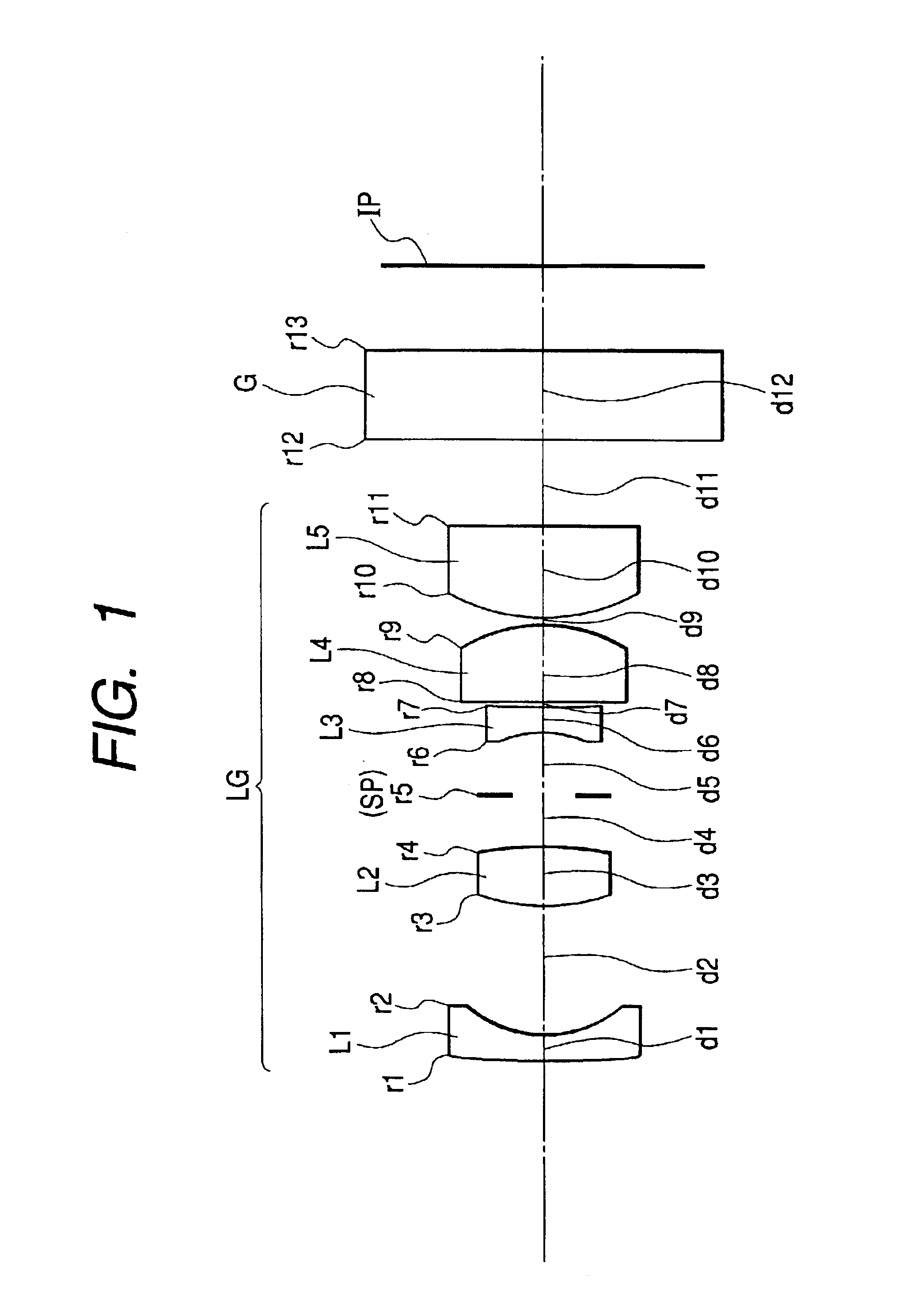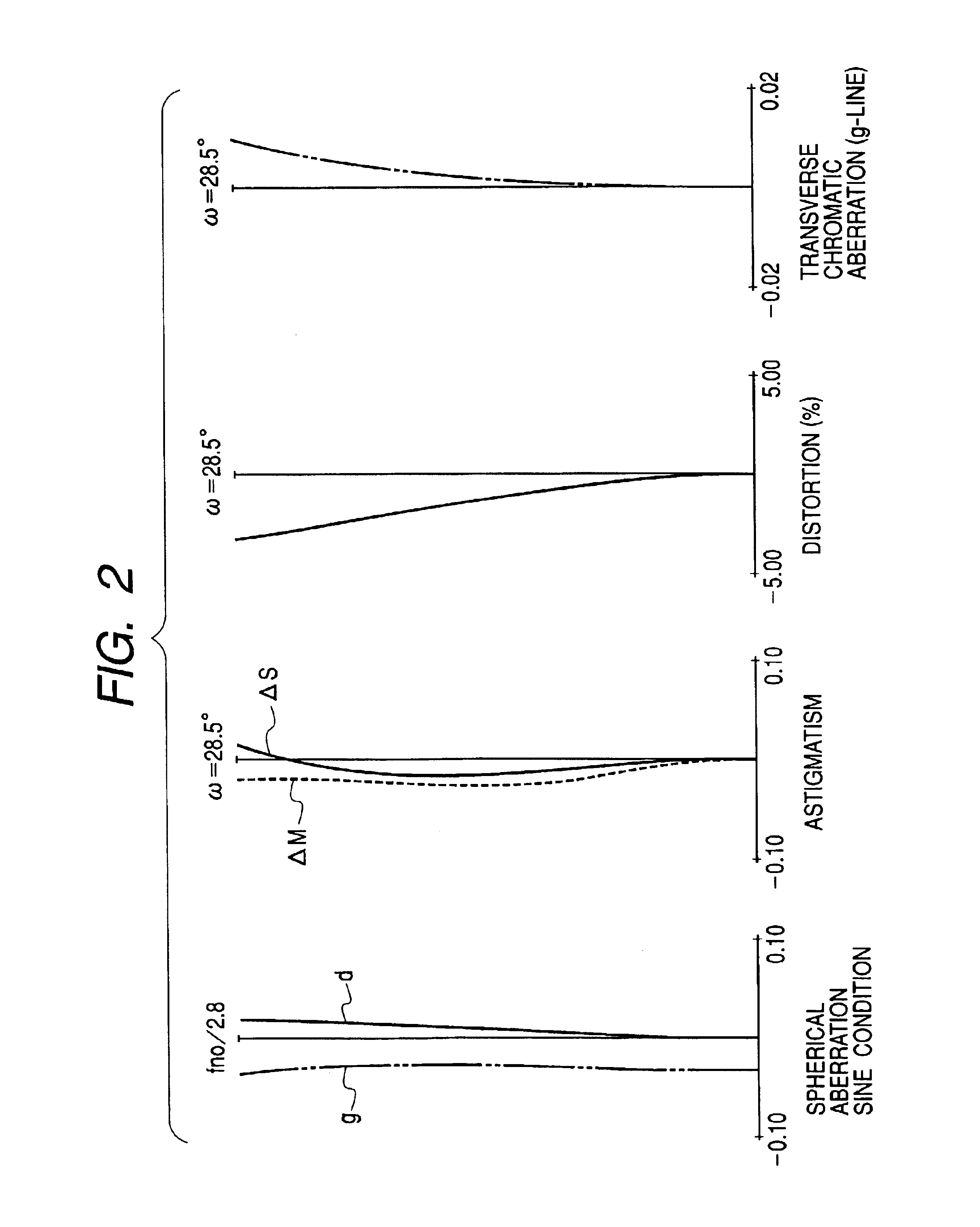Lens system and camera having the same
a technology of lens system and camera, applied in the field of lenses system, can solve the problems of difficult to correct aberrations, difficult to obtain sufficient back focus, sensitive performance degradation of the parallel and tilt decentering of the first lens, etc., and achieve the effect of long back focus and high performan
- Summary
- Abstract
- Description
- Claims
- Application Information
AI Technical Summary
Benefits of technology
Problems solved by technology
Method used
Image
Examples
Embodiment Construction
[0029]FIGS. 1, 3, and 5 are sectional view of the lenses in lens systems of Numerical Examples 1 to 3 corresponding to the first to third embodiments of the present invention.
[0030]FIGS. 2, 4, and 6 are charts showing aberrations in Numerical Examples 1 to 3 corresponding to the first to third embodiments of the lens system of the present invention.
[0031]In the sectional views of the lenses, the left corresponds to the object side (front side), and the right corresponds to the image plane side (rear side).
[0032]A lens system LG has a first lens L1 having negative refracting power (optical power) and a meniscus shape with its convex surface facing the object side, a second lens L2 having positive refracting power and convex lens surfaces on both sides, a third lens L3 having negative refracting power and concave lens surfaces on both sides, a fourth lens L4 having positive refracting power and a meniscus shape with its convex surface facing the image plane side or convex lens surface...
PUM
 Login to View More
Login to View More Abstract
Description
Claims
Application Information
 Login to View More
Login to View More - R&D
- Intellectual Property
- Life Sciences
- Materials
- Tech Scout
- Unparalleled Data Quality
- Higher Quality Content
- 60% Fewer Hallucinations
Browse by: Latest US Patents, China's latest patents, Technical Efficacy Thesaurus, Application Domain, Technology Topic, Popular Technical Reports.
© 2025 PatSnap. All rights reserved.Legal|Privacy policy|Modern Slavery Act Transparency Statement|Sitemap|About US| Contact US: help@patsnap.com



